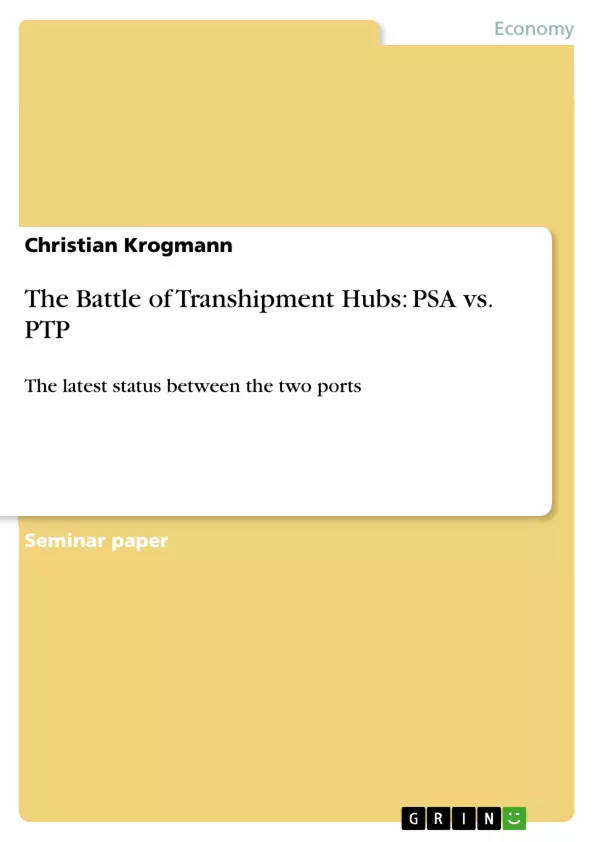For a long period, the port of Singapore had a relatively exclusive position at the Straits of Malacca and it was the dominant transhipment hub in Southeast Asia (Leong and Chen, 2004). However, the main port operator, PSA International Pte Ltd – formerly also known as Port of Singapore Authority – has to face competition since the emergence of the Port of Tanjung Pelepas which started its operation in 1999. It has been serious for PSA since the shift of main customers such as Maersk or Evergreen at the latest as a big proportion of volume was thereby shifted to PTP (Leong and Chen, 2004). In the following, the latest status between the two ports will be described.
Inhaltsverzeichnis (Table of Contents)
- INTRODUCTION
- THE LATEST STATUS BETWEEN THE PORTS
- Container throughput and growth rates
- Other performance facts
- Current strategic approach
- CONCLUSION
Zielsetzung und Themenschwerpunkte (Objectives and Key Themes)
This case study aims to provide a comprehensive overview of the latest status between two major transhipment hubs in Southeast Asia: the Port of Singapore Authority (PSA) and the Port of Tanjung Pelepas (PTP). The analysis focuses on comparing their performance based on container throughput, growth rates, and strategic approaches.
- Competition between PSA and PTP for transhipment hub dominance in Southeast Asia
- Comparison of container throughput and growth rates at both ports
- Analysis of strategic approaches adopted by PSA and PTP
- Impact of customer shifts and competition on the overall performance of the ports
- Evolution of the transhipment hub landscape in Southeast Asia
Zusammenfassung der Kapitel (Chapter Summaries)
The introduction establishes the context of the competition between PSA and PTP, highlighting the shift in dominance from PSA to PTP due to the emergence of the latter in 1999. Chapter 2 delves into the latest status of both ports, focusing on container throughput and growth rates. Figure 1 depicts the development of container throughput from 1999 to 2011, demonstrating PSA's sustained dominance despite PTP's notable growth. Figure 2 further emphasizes PTP's strong growth rates compared to PSA, except for a few specific years.
Schlüsselwörter (Keywords)
The key terms and concepts explored in this case study include: transhipment hubs, Southeast Asia, container throughput, growth rates, PSA, PTP, Port of Singapore Authority, Port of Tanjung Pelepas, competition, strategic approaches, customer shifts, and port performance.
- Arbeit zitieren
- Christian Krogmann (Autor:in), 2012, The Battle of Transhipment Hubs: PSA vs. PTP, München, GRIN Verlag, https://www.hausarbeiten.de/document/195086


